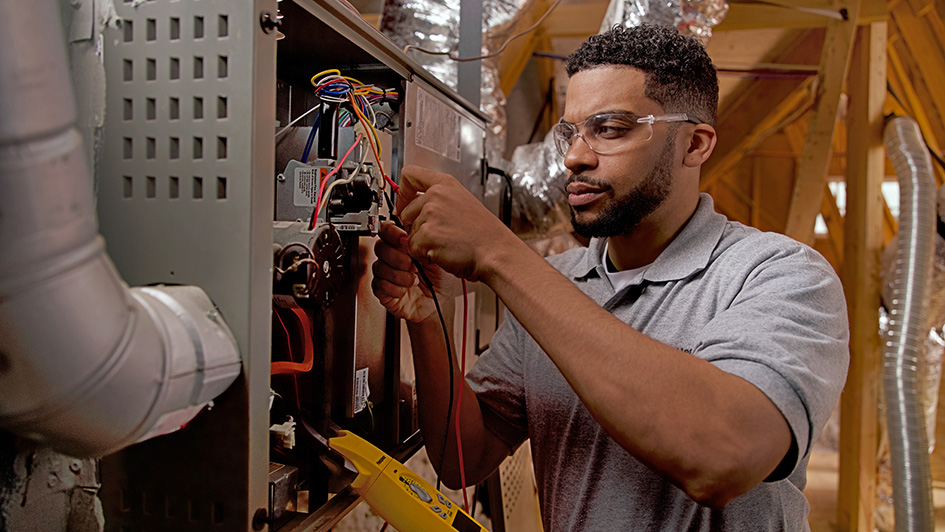
A furnace is usually a background player in your home, keeping you warm during the cold winter months. It frequently won't be noticed until a malfunction appears.
One root cause might be that your furnace has a cracked heat exchanger. It can potentially be hazardous, so it’s worthwhile to know the evidence of a cracked heat exchanger and what you can do if you are worried that might be the problem.
What Is a Heat Exchanger in a Furnace?
A heat exchanger helps transition heat from the combustion chamber in your furnace to the air that circulates inside the ventilation. It usually accomplishes this via coils or tubes that warm the air while serving as a barrier to keep the gasses formed in the combustion chamber, called flue gasses, from leaking out into your home.
Is a Cracked Heat Exchanger Dangerous?
Thanks to its key role, it’s no surprise that a cracked heat exchanger can pose a risk. A crack in the heat exchanger can allow dangerous gasses – such as carbon monoxide, which can be lethal – to flow through your home.
For that reason, don't ever run your heater if you think it has a cracked heat exchanger, as this could make your entire household ill. Reach out to an HVAC professional as soon as possible if you think your heater has a cracked heat exchanger that needs to be repaired.
Four Signs of a Cracked Heat Exchanger:
- Furnace shuts off: Cracks in the heat exchanger could cause your furnace to turn off.
- Odd Smells: If the air coming out of your furnace has an intense chemical odor, it might be evidence gas is slipping through cracks in your heat exchanger. These gasses, which can smell like formaldehyde, are a significant warning sign.
- Carbon monoxide alarm initiates or you feel poisoning symptoms: If a cracked heat exchanger is emitting carbon monoxide into your home, your carbon monoxide alarm could go off or family members may experience signs of carbon monoxide poisoning. Symptoms include headaches, dizziness, weakness, nausea, vomiting or feeling sleepy. If an alarm goes off or you feel unwell, exit the home immediately and then call for help.
- Soot: If you spot black sooty accumulating around the exterior of your furnace, it’s an indication something may be seriously wrong.
What You Can Do if a Furnace Heat Exchanger is Cracked
If you believe your furnace has a cracked heat exchanger, hire a pro experienced in furnace installation Norton as soon as possible so they can examine your system and, if required, perform a furnace heat exchanger replacement. Costs should differ depending on the situation, but estimates run in the neighborhood of $1,000 to $3,000.
Fortunately, the good news is that heat exchangers are generally protected by the warranty. You should review the warranty paperwork on your furnace, since while the warranty might not cover the entire cost of repairs, it could significantly reduce your bill.
How to Avoid a Cracked Heat Exchanger in Your Home
One of the easiest ways to prevent a problem in your furnace overall is through consistent furnace maintenance. Furnaces work the best when they operate efficiently. Hiring a certified professional to inspect your furnace for old parts, clogs in the air filters and other common problems can help you avoid getting a big bill later on.
It’s also a good idea to inspect your furnace filters every few months – it’s encouraged some filters be swapped out every 90 days or sooner if they are dirty or grimy. While the filters are not part of the heat exchanger itself, the strain of drawing air through a clogged filter makes your entire furnace work harder to do its job. And the harder your furnace needs to run, the more wear and tear components like the heat exchanger will sustain.
